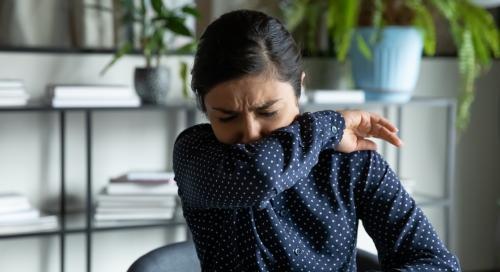Under the Control of Substances Hazardous to Health (COSHH) Regulations 2002, employers are required to ensure that local exhaust ventilation (LEV) systems are properly maintained and subject to a thorough examination and test at least once every 14 months, or more frequently for high-risk processes. These statutory assessments are critical in demonstrating compliance and ensuring that extraction systems are effectively controlling harmful airborne substances in the workplace.
At Envirochem, we carry out comprehensive LEV testing and inspection services designed to help you meet your legal obligations and maintain safe, healthy working environments. Our approach combines calibrated measurement with practical on-site evaluation, allowing us to assess system performance under real-world operating conditions and provide clear, evidence-based recommendations.
What We Test
LEV systems vary in complexity depending on the type of substance controlled and the layout of the workplace. Our consultants are experienced in testing systems across a range of sectors and processes, including:
- Fixed or flexible extraction arms and capture hoods
- Enclosed booths, canopies and downdraught benches
- Multi-point ducted systems and mobile extraction units
We assess each system against its original design specifications, evaluating airflow, face velocities, and general condition to determine whether adequate control is being achieved. We also review operator usage, maintenance practices and documentation to provide you with insights for wider regulatory compliance.
Our Process
Each assessment begins with a review of the LEV system not just as a piece of equipment, but as part of your broader exposure control strategy. We examine how the system is used day-to-day, which substances it is designed to capture, and how your operatives work with it.
We then carry out a thorough examination using calibrated airflow instruments, assessing key parameters such as capture velocity, static pressure, and duct transport velocity. Our consultants inspect hoods, filters, ducting, and fans to determine whether the system remains suitable for its intended use and whether maintenance or upgrades are required.
Once testing is complete, we provide a detailed written report. This includes all measurement data, a clear compliance statement, and photographic evidence where appropriate. Our reports include practical recommendations such as technical system adjustments, updating maintenance schedules, or improving operator training to ensure consistent use.
When Is LEV Testing Required?
LEV systems must be tested at least once every 14 months to remain compliant with COSHH. However, more frequent testing may be needed in the following cases:
- Blasting for cleaning metal castings during manufacture
- Dry polishing or grinding metal articles
- Non-ferrous metal casting
- Jute cloth manufacture
- Evidence of reduced airflow, filter blockage or mechanical wear
- Significant changes to the process, tooling or materials used
- Reports of ill health, poor air quality or visible fume accumulation
Our consultants can help you determine whether your current testing schedule is appropriate for the risk level and nature of your workplace.
The Impact of Poorly Maintained LEV Systems
LEV is one of the most effective control strategies for airborne contaminants, but only when it functions correctly. Systems that are poorly maintained or no longer performing to specification can result in significant worker exposure, even when they appear to be operating normally. Over time, this can lead to serious health consequences, including respiratory disease, asthma, dermatitis and, in some cases, long-term occupational disease.
From a compliance perspective, failure to carry out statutory LEV testing may result in enforcement action, reputational damage and increased insurance risk. It also undermines your ability to demonstrate that control measures are proportionate, effective and in line with regulatory guidance.
By identifying system failures early and providing practical advice on improvements, our LEV testing service supports ongoing risk reduction, strengthens your compliance position, and helps protect the health and safety of your workforce.
Why Choose Envirochem?
Our LEV assessments are led by highly qualified occupational hygiene consultants with extensive experience across manufacturing, construction, laboratories, and complex industrial environments. This depth of sector knowledge means we understand how systems function in the real world and not just under test conditions.
Rather than delivering standalone reports, we assess your extraction systems as part of a wider workplace context. We look at how controls are used day to day, how exposure routes interact, and whether your existing engineering solutions are fit for purpose.
Where needed, we deliver LEV testing alongside other occupational hygiene services such as personal exposure monitoring or air quality testing, enabling a joined-up approach to airborne risk management. Our reports are written with clarity and purpose, giving you the confidence to take action, demonstrate compliance, and maintain effective long-term control of hazardous substances.
Speak to Our Team
If you’re unsure whether your LEV system is due for testing or are experiencing issues with fume or dust control, get in touch with our expert team. Our consultants will work with you to understand your current setup and advise on the most appropriate next steps for protecting your workforce and meeting your legal duties.




